- Honey Market By Type (USD Billion, 2019-2035)
- Organic Honey
- Raw Honey
- Regular Honey
- Flavored Honey
- Honey Market By Application (USD Billion, 2019-2035)
- Food and Beverage
- Cosmetics and Personal Care
- Pharmaceuticals
- Honey Market By Distribution Channel (USD Billion, 2019-2035)
- Supermarkets and Hypermarkets
- Online Retail
- Convenience Stores
- Specialty Stores
- Honey Market By Form (USD Billion, 2019-2035)
- Liquid
- Granulated
- Comb Honey
- Honey Market By Regional (USD Billion, 2019-2035)
- North America
- Europe
- South America
- Asia Pacific
- Middle East and Africa
North America Outlook (USD Billion, 2019-2035)
North America Honey Market by Type
Organic Honey
Raw Honey
Regular Honey
Flavored Honey
North America Honey Market by Application Type
Food and Beverage
Cosmetics and Personal Care
Pharmaceuticals
North America Honey Market by Distribution Channel Type
Supermarkets and Hypermarkets
Online Retail
Convenience Stores
Specialty Stores
North America Honey Market by Form Type
Liquid
Granulated
Comb Honey
North America Honey Market by Regional Type
US
Canada
US Outlook (USD Billion, 2019-2035)
US Honey Market by Type
Organic Honey
Raw Honey
Regular Honey
Flavored Honey
US Honey Market by Application Type
Food and Beverage
Cosmetics and Personal Care
Pharmaceuticals
US Honey Market by Distribution Channel Type
Supermarkets and Hypermarkets
Online Retail
Convenience Stores
Specialty Stores
US Honey Market by Form Type
Liquid
Granulated
Comb Honey
CANADA Outlook (USD Billion, 2019-2035)
CANADA Honey Market by Type
Organic Honey
Raw Honey
Regular Honey
Flavored Honey
CANADA Honey Market by Application Type
Food and Beverage
Cosmetics and Personal Care
Pharmaceuticals
CANADA Honey Market by Distribution Channel Type
Supermarkets and Hypermarkets
Online Retail
Convenience Stores
Specialty Stores
CANADA Honey Market by Form Type
Liquid
Granulated
Comb Honey
Europe Outlook (USD Billion, 2019-2035)
Europe Honey Market by Type
Organic Honey
Raw Honey
Regular Honey
Flavored Honey
Europe Honey Market by Application Type
Food and Beverage
Cosmetics and Personal Care
Pharmaceuticals
Europe Honey Market by Distribution Channel Type
Supermarkets and Hypermarkets
Online Retail
Convenience Stores
Specialty Stores
Europe Honey Market by Form Type
Liquid
Granulated
Comb Honey
Europe Honey Market by Regional Type
Germany
UK
France
Russia
Italy
Spain
Rest of Europe
GERMANY Outlook (USD Billion, 2019-2035)
GERMANY Honey Market by Type
Organic Honey
Raw Honey
Regular Honey
Flavored Honey
GERMANY Honey Market by Application Type
Food and Beverage
Cosmetics and Personal Care
Pharmaceuticals
GERMANY Honey Market by Distribution Channel Type
Supermarkets and Hypermarkets
Online Retail
Convenience Stores
Specialty Stores
GERMANY Honey Market by Form Type
Liquid
Granulated
Comb Honey
UK Outlook (USD Billion, 2019-2035)
UK Honey Market by Type
Organic Honey
Raw Honey
Regular Honey
Flavored Honey
UK Honey Market by Application Type
Food and Beverage
Cosmetics and Personal Care
Pharmaceuticals
UK Honey Market by Distribution Channel Type
Supermarkets and Hypermarkets
Online Retail
Convenience Stores
Specialty Stores
UK Honey Market by Form Type
Liquid
Granulated
Comb Honey
FRANCE Outlook (USD Billion, 2019-2035)
FRANCE Honey Market by Type
Organic Honey
Raw Honey
Regular Honey
Flavored Honey
FRANCE Honey Market by Application Type
Food and Beverage
Cosmetics and Personal Care
Pharmaceuticals
FRANCE Honey Market by Distribution Channel Type
Supermarkets and Hypermarkets
Online Retail
Convenience Stores
Specialty Stores
FRANCE Honey Market by Form Type
Liquid
Granulated
Comb Honey
RUSSIA Outlook (USD Billion, 2019-2035)
RUSSIA Honey Market by Type
Organic Honey
Raw Honey
Regular Honey
Flavored Honey
RUSSIA Honey Market by Application Type
Food and Beverage
Cosmetics and Personal Care
Pharmaceuticals
RUSSIA Honey Market by Distribution Channel Type
Supermarkets and Hypermarkets
Online Retail
Convenience Stores
Specialty Stores
RUSSIA Honey Market by Form Type
Liquid
Granulated
Comb Honey
ITALY Outlook (USD Billion, 2019-2035)
ITALY Honey Market by Type
Organic Honey
Raw Honey
Regular Honey
Flavored Honey
ITALY Honey Market by Application Type
Food and Beverage
Cosmetics and Personal Care
Pharmaceuticals
ITALY Honey Market by Distribution Channel Type
Supermarkets and Hypermarkets
Online Retail
Convenience Stores
Specialty Stores
ITALY Honey Market by Form Type
Liquid
Granulated
Comb Honey
SPAIN Outlook (USD Billion, 2019-2035)
SPAIN Honey Market by Type
Organic Honey
Raw Honey
Regular Honey
Flavored Honey
SPAIN Honey Market by Application Type
Food and Beverage
Cosmetics and Personal Care
Pharmaceuticals
SPAIN Honey Market by Distribution Channel Type
Supermarkets and Hypermarkets
Online Retail
Convenience Stores
Specialty Stores
SPAIN Honey Market by Form Type
Liquid
Granulated
Comb Honey
REST OF EUROPE Outlook (USD Billion, 2019-2035)
REST OF EUROPE Honey Market by Type
Organic Honey
Raw Honey
Regular Honey
Flavored Honey
REST OF EUROPE Honey Market by Application Type
Food and Beverage
Cosmetics and Personal Care
Pharmaceuticals
REST OF EUROPE Honey Market by Distribution Channel Type
Supermarkets and Hypermarkets
Online Retail
Convenience Stores
Specialty Stores
REST OF EUROPE Honey Market by Form Type
Liquid
Granulated
Comb Honey
APAC Outlook (USD Billion, 2019-2035)
APAC Honey Market by Type
Organic Honey
Raw Honey
Regular Honey
Flavored Honey
APAC Honey Market by Application Type
Food and Beverage
Cosmetics and Personal Care
Pharmaceuticals
APAC Honey Market by Distribution Channel Type
Supermarkets and Hypermarkets
Online Retail
Convenience Stores
Specialty Stores
APAC Honey Market by Form Type
Liquid
Granulated
Comb Honey
APAC Honey Market by Regional Type
China
India
Japan
South Korea
Malaysia
Thailand
Indonesia
Rest of APAC
CHINA Outlook (USD Billion, 2019-2035)
CHINA Honey Market by Type
Organic Honey
Raw Honey
Regular Honey
Flavored Honey
CHINA Honey Market by Application Type
Food and Beverage
Cosmetics and Personal Care
Pharmaceuticals
CHINA Honey Market by Distribution Channel Type
Supermarkets and Hypermarkets
Online Retail
Convenience Stores
Specialty Stores
CHINA Honey Market by Form Type
Liquid
Granulated
Comb Honey
INDIA Outlook (USD Billion, 2019-2035)
INDIA Honey Market by Type
Organic Honey
Raw Honey
Regular Honey
Flavored Honey
INDIA Honey Market by Application Type
Food and Beverage
Cosmetics and Personal Care
Pharmaceuticals
INDIA Honey Market by Distribution Channel Type
Supermarkets and Hypermarkets
Online Retail
Convenience Stores
Specialty Stores
INDIA Honey Market by Form Type
Liquid
Granulated
Comb Honey
JAPAN Outlook (USD Billion, 2019-2035)
JAPAN Honey Market by Type
Organic Honey
Raw Honey
Regular Honey
Flavored Honey
JAPAN Honey Market by Application Type
Food and Beverage
Cosmetics and Personal Care
Pharmaceuticals
JAPAN Honey Market by Distribution Channel Type
Supermarkets and Hypermarkets
Online Retail
Convenience Stores
Specialty Stores
JAPAN Honey Market by Form Type
Liquid
Granulated
Comb Honey
SOUTH KOREA Outlook (USD Billion, 2019-2035)
SOUTH KOREA Honey Market by Type
Organic Honey
Raw Honey
Regular Honey
Flavored Honey
SOUTH KOREA Honey Market by Application Type
Food and Beverage
Cosmetics and Personal Care
Pharmaceuticals
SOUTH KOREA Honey Market by Distribution Channel Type
Supermarkets and Hypermarkets
Online Retail
Convenience Stores
Specialty Stores
SOUTH KOREA Honey Market by Form Type
Liquid
Granulated
Comb Honey
MALAYSIA Outlook (USD Billion, 2019-2035)
MALAYSIA Honey Market by Type
Organic Honey
Raw Honey
Regular Honey
Flavored Honey
MALAYSIA Honey Market by Application Type
Food and Beverage
Cosmetics and Personal Care
Pharmaceuticals
MALAYSIA Honey Market by Distribution Channel Type
Supermarkets and Hypermarkets
Online Retail
Convenience Stores
Specialty Stores
MALAYSIA Honey Market by Form Type
Liquid
Granulated
Comb Honey
THAILAND Outlook (USD Billion, 2019-2035)
THAILAND Honey Market by Type
Organic Honey
Raw Honey
Regular Honey
Flavored Honey
THAILAND Honey Market by Application Type
Food and Beverage
Cosmetics and Personal Care
Pharmaceuticals
THAILAND Honey Market by Distribution Channel Type
Supermarkets and Hypermarkets
Online Retail
Convenience Stores
Specialty Stores
THAILAND Honey Market by Form Type
Liquid
Granulated
Comb Honey
INDONESIA Outlook (USD Billion, 2019-2035)
INDONESIA Honey Market by Type
Organic Honey
Raw Honey
Regular Honey
Flavored Honey
INDONESIA Honey Market by Application Type
Food and Beverage
Cosmetics and Personal Care
Pharmaceuticals
INDONESIA Honey Market by Distribution Channel Type
Supermarkets and Hypermarkets
Online Retail
Convenience Stores
Specialty Stores
INDONESIA Honey Market by Form Type
Liquid
Granulated
Comb Honey
REST OF APAC Outlook (USD Billion, 2019-2035)
REST OF APAC Honey Market by Type
Organic Honey
Raw Honey
Regular Honey
Flavored Honey
REST OF APAC Honey Market by Application Type
Food and Beverage
Cosmetics and Personal Care
Pharmaceuticals
REST OF APAC Honey Market by Distribution Channel Type
Supermarkets and Hypermarkets
Online Retail
Convenience Stores
Specialty Stores
REST OF APAC Honey Market by Form Type
Liquid
Granulated
Comb Honey
South America Outlook (USD Billion, 2019-2035)
South America Honey Market by Type
Organic Honey
Raw Honey
Regular Honey
Flavored Honey
South America Honey Market by Application Type
Food and Beverage
Cosmetics and Personal Care
Pharmaceuticals
South America Honey Market by Distribution Channel Type
Supermarkets and Hypermarkets
Online Retail
Convenience Stores
Specialty Stores
South America Honey Market by Form Type
Liquid
Granulated
Comb Honey
South America Honey Market by Regional Type
Brazil
Mexico
Argentina
Rest of South America
BRAZIL Outlook (USD Billion, 2019-2035)
BRAZIL Honey Market by Type
Organic Honey
Raw Honey
Regular Honey
Flavored Honey
BRAZIL Honey Market by Application Type
Food and Beverage
Cosmetics and Personal Care
Pharmaceuticals
BRAZIL Honey Market by Distribution Channel Type
Supermarkets and Hypermarkets
Online Retail
Convenience Stores
Specialty Stores
BRAZIL Honey Market by Form Type
Liquid
Granulated
Comb Honey
MEXICO Outlook (USD Billion, 2019-2035)
MEXICO Honey Market by Type
Organic Honey
Raw Honey
Regular Honey
Flavored Honey
MEXICO Honey Market by Application Type
Food and Beverage
Cosmetics and Personal Care
Pharmaceuticals
MEXICO Honey Market by Distribution Channel Type
Supermarkets and Hypermarkets
Online Retail
Convenience Stores
Specialty Stores
MEXICO Honey Market by Form Type
Liquid
Granulated
Comb Honey
ARGENTINA Outlook (USD Billion, 2019-2035)
ARGENTINA Honey Market by Type
Organic Honey
Raw Honey
Regular Honey
Flavored Honey
ARGENTINA Honey Market by Application Type
Food and Beverage
Cosmetics and Personal Care
Pharmaceuticals
ARGENTINA Honey Market by Distribution Channel Type
Supermarkets and Hypermarkets
Online Retail
Convenience Stores
Specialty Stores
ARGENTINA Honey Market by Form Type
Liquid
Granulated
Comb Honey
REST OF SOUTH AMERICA Outlook (USD Billion, 2019-2035)
REST OF SOUTH AMERICA Honey Market by Type
Organic Honey
Raw Honey
Regular Honey
Flavored Honey
REST OF SOUTH AMERICA Honey Market by Application Type
Food and Beverage
Cosmetics and Personal Care
Pharmaceuticals
REST OF SOUTH AMERICA Honey Market by Distribution Channel Type
Supermarkets and Hypermarkets
Online Retail
Convenience Stores
Specialty Stores
REST OF SOUTH AMERICA Honey Market by Form Type
Liquid
Granulated
Comb Honey
MEA Outlook (USD Billion, 2019-2035)
MEA Honey Market by Type
Organic Honey
Raw Honey
Regular Honey
Flavored Honey
MEA Honey Market by Application Type
Food and Beverage
Cosmetics and Personal Care
Pharmaceuticals
MEA Honey Market by Distribution Channel Type
Supermarkets and Hypermarkets
Online Retail
Convenience Stores
Specialty Stores
MEA Honey Market by Form Type
Liquid
Granulated
Comb Honey
MEA Honey Market by Regional Type
GCC Countries
South Africa
Rest of MEA
GCC COUNTRIES Outlook (USD Billion, 2019-2035)
GCC COUNTRIES Honey Market by Type
Organic Honey
Raw Honey
Regular Honey
Flavored Honey
GCC COUNTRIES Honey Market by Application Type
Food and Beverage
Cosmetics and Personal Care
Pharmaceuticals
GCC COUNTRIES Honey Market by Distribution Channel Type
Supermarkets and Hypermarkets
Online Retail
Convenience Stores
Specialty Stores
GCC COUNTRIES Honey Market by Form Type
Liquid
Granulated
Comb Honey
SOUTH AFRICA Outlook (USD Billion, 2019-2035)
SOUTH AFRICA Honey Market by Type
Organic Honey
Raw Honey
Regular Honey
Flavored Honey
SOUTH AFRICA Honey Market by Application Type
Food and Beverage
Cosmetics and Personal Care
Pharmaceuticals
SOUTH AFRICA Honey Market by Distribution Channel Type
Supermarkets and Hypermarkets
Online Retail
Convenience Stores
Specialty Stores
SOUTH AFRICA Honey Market by Form Type
Liquid
Granulated
Comb Honey
REST OF MEA Outlook (USD Billion, 2019-2035)
REST OF MEA Honey Market by Type
Organic Honey
Raw Honey
Regular Honey
Flavored Honey
REST OF MEA Honey Market by Application Type
Food and Beverage
Cosmetics and Personal Care
Pharmaceuticals
REST OF MEA Honey Market by Distribution Channel Type
Supermarkets and Hypermarkets
Online Retail
Convenience Stores
Specialty Stores
REST OF MEA Honey Market by Form Type
Liquid
Granulated
Comb Honey

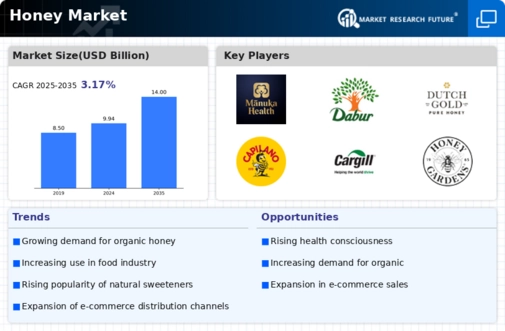
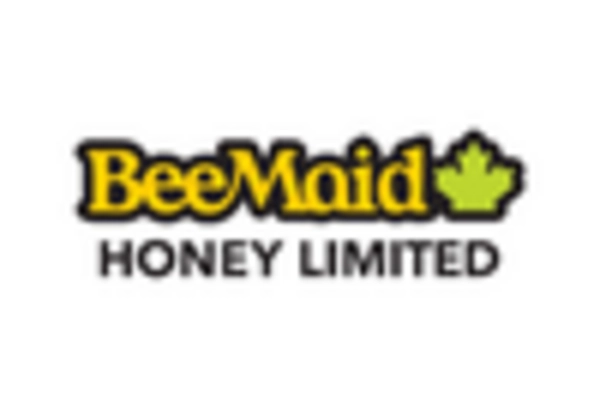
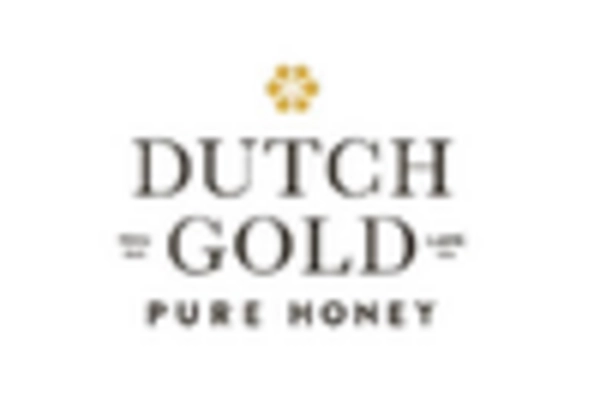
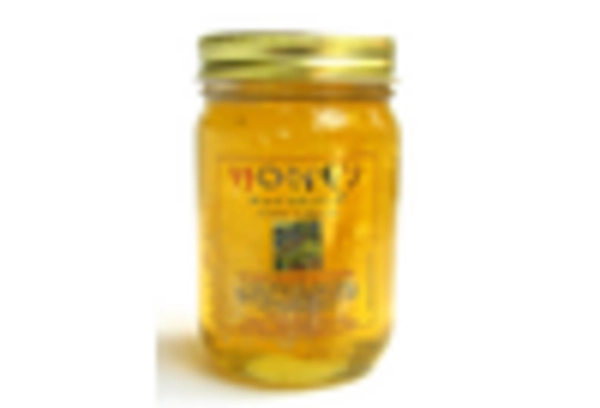

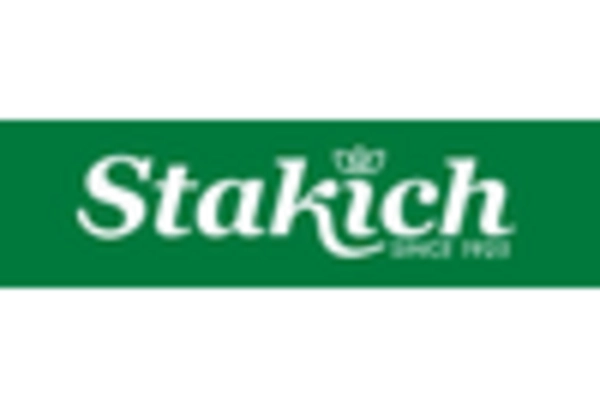
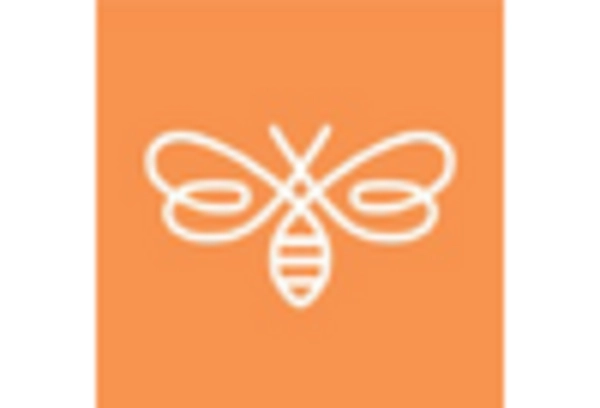









Leave a Comment